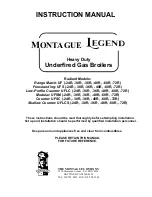
49
1.
Remove the balanced flue system.
Note
If the balanced flue system cannot be removed,
clean and check the back draught safety device via
the inspection cover.
2.
Check back draught safety device
A
for dirt, ease
of movement and function.
3.
Refit the balanced flue system.
4.
Pour a small amount of water through the inspec-
tion port to ensure the back draught safety device
is working.
Cleaning the heating surfaces
!
Please note
Scratches to the surfaces of the heat exchanger
that come into contact with hot gas can result in
corrosion damage. Brushing can cause deposits
to become lodged in the gaps between the coils.
Never use brushes to clean the heating sur-
faces.
!
Please note
Prevent damage due to cleaning water.
Cover electronic components with suitable
watertight material.
Note
Discolouration on the heat exchanger surface is a nor-
mal sign of use. It has no bearing on the function and
service life of the heat exchanger.
The use of chemical cleaning agents is not required.
A
Fig. 35
1.
Use a vacuum cleaner to remove combustion resi-
dues from heating surface
A
of the heat
exchanger.
2.
Flush heating surface
A
with water.
3.
Check condensate drain. Clean the trap: See the
following chapter.
4.
Check the thermal insulation mat (if installed) in the
heat exchanger for damage, replace if necessary.
Checking the condensate drain and cleaning the trap
!
Please note
Prevent damage due to condensate.
Cover electronic components with suitable
watertight material.
Commissioning, inspection, maintenance
Checking the back draught safety devices
(cont.)
6167586
















































